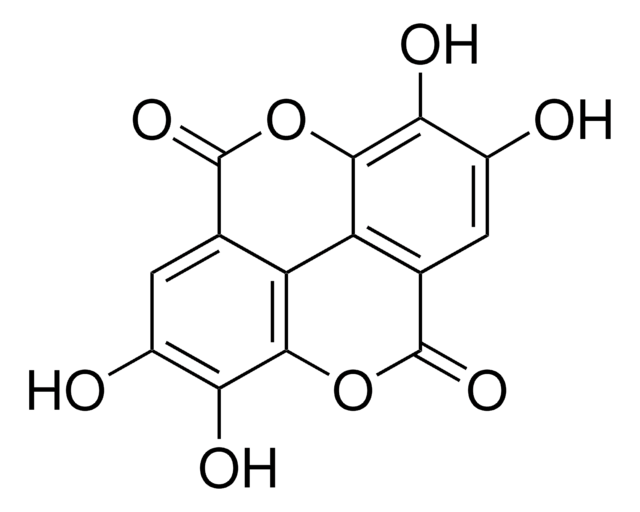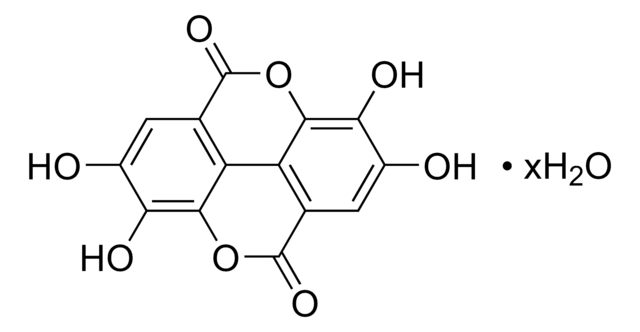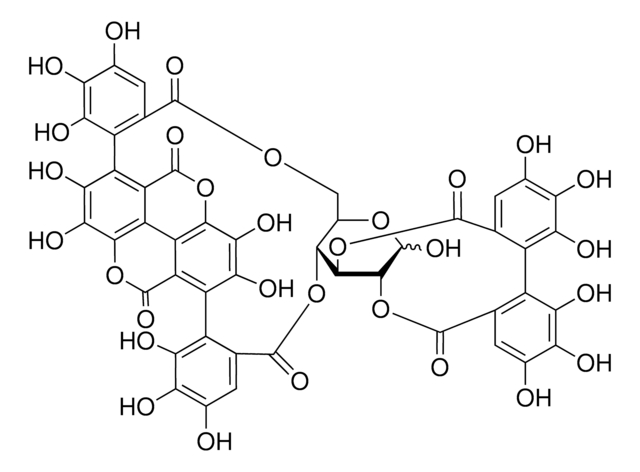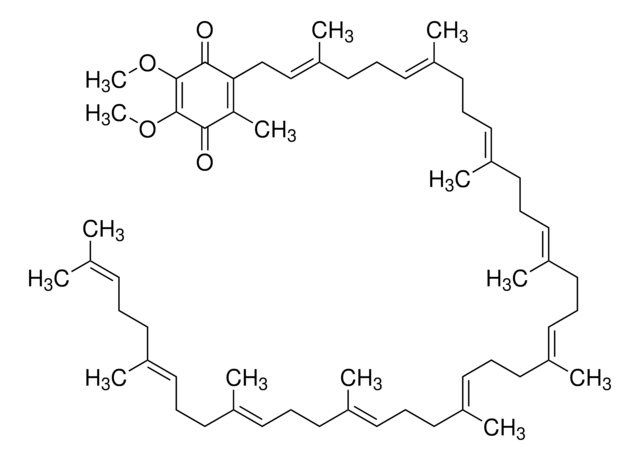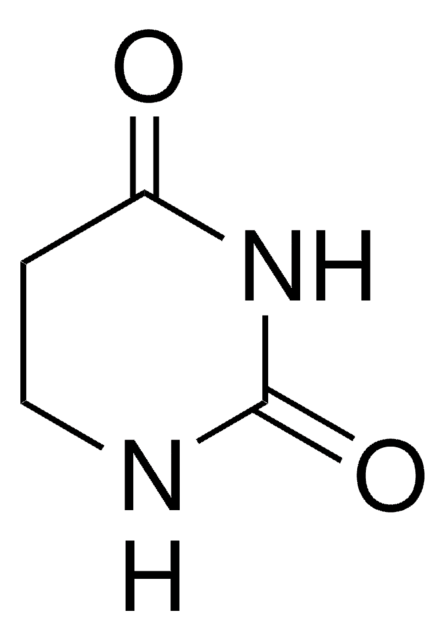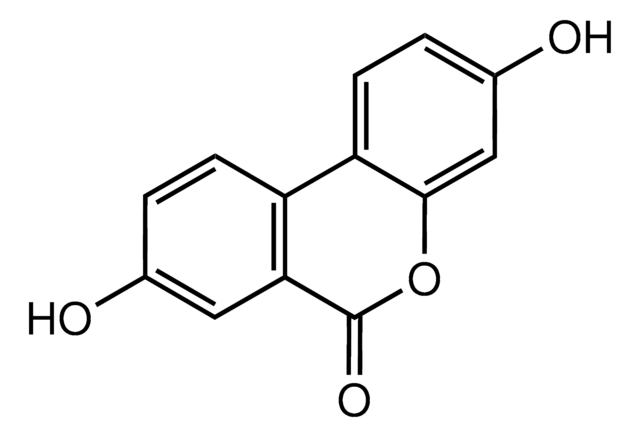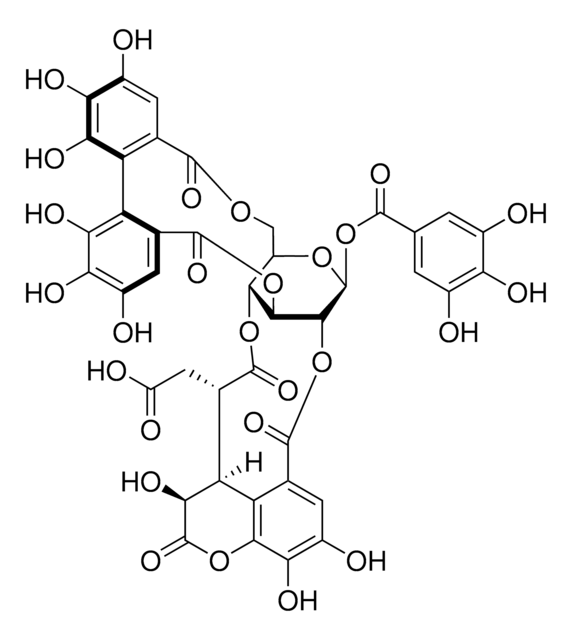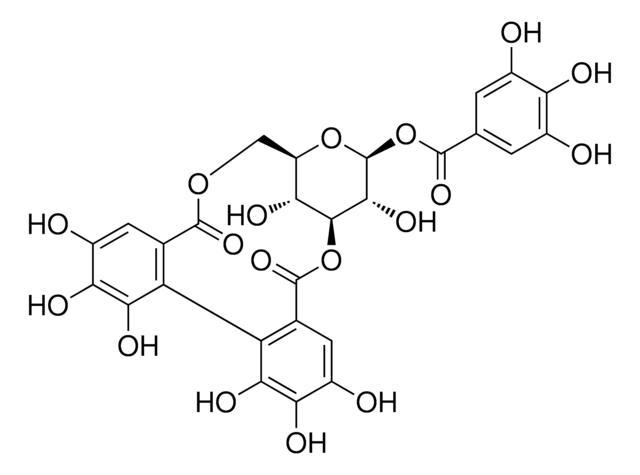E2250
Ellagic acid
≥95% (HPLC), powder, from tree bark
Synonym(s):
4,4′,5,5′,6,6′-Hexahydroxydiphenic acid 2,6,2′,6′-dilactone, Alizarin Yellow, Benzoaric acid, Elagostasine, Eleagic acid, Gallogen, Lagistase
About This Item
Recommended Products
biological source
tree bark
Quality Level
Assay
≥95% (HPLC)
form
powder
shelf life
5 yr
solubility
1 M NaOH: 10 mg/mL
application(s)
metabolomics
vitamins, nutraceuticals, and natural products
SMILES string
Oc1cc2C(=O)Oc3c(O)c(O)cc4C(=O)Oc(c1O)c2-c34
InChI
1S/C14H6O8/c15-5-1-3-7-8-4(14(20)22-11(7)9(5)17)2-6(16)10(18)12(8)21-13(3)19/h1-2,15-18H
InChI key
AFSDNFLWKVMVRB-UHFFFAOYSA-N
Gene Information
human ... CSK(1445) , DYRK1A(1859) , GSK3B(2932) , SRC(6714)
rat ... Lyn(81515) , Syk(25155)
Looking for similar products? Visit Product Comparison Guide
General description
Application
- to study the metabolism of dietary phenolic acids by Lactobacillus plantarum CECT 748T
- as a potential substrate for the high production of Lactobacillus plantarum tannase
- as a standard in the study to examine the phenolic components and anti-oxidant activity of nettle
- to study the links between dietary ellagic acid and epigenetic modulation of adipogenesis
Biochem/physiol Actions
Storage Class Code
11 - Combustible Solids
WGK
WGK 1
Flash Point(F)
Not applicable
Flash Point(C)
Not applicable
Personal Protective Equipment
Certificates of Analysis (COA)
Search for Certificates of Analysis (COA) by entering the products Lot/Batch Number. Lot and Batch Numbers can be found on a product’s label following the words ‘Lot’ or ‘Batch’.
Already Own This Product?
Find documentation for the products that you have recently purchased in the Document Library.
Customers Also Viewed
Related Content
DISCOVER Bioactive Small Molecules for Nitric Oxide & Cell Stress Research
Our team of scientists has experience in all areas of research including Life Science, Material Science, Chemical Synthesis, Chromatography, Analytical and many others.
Contact Technical Service